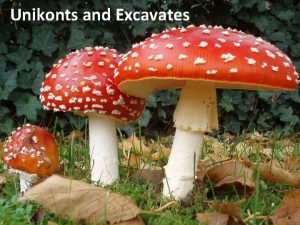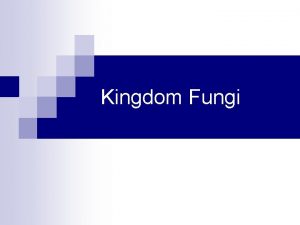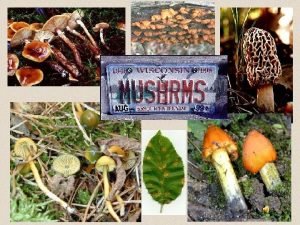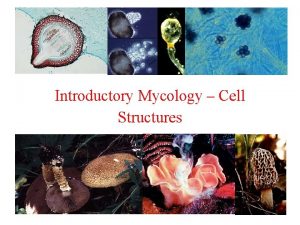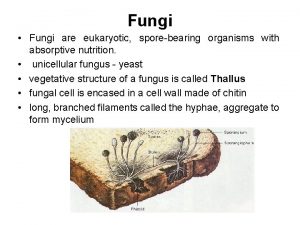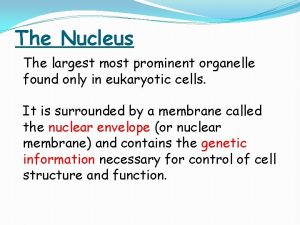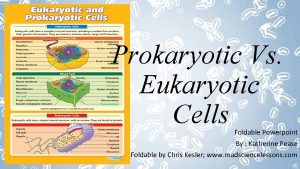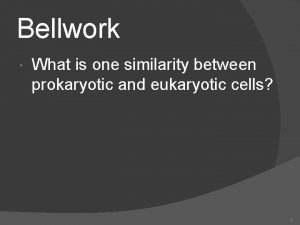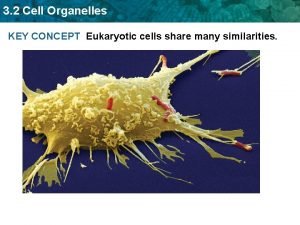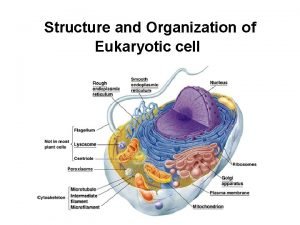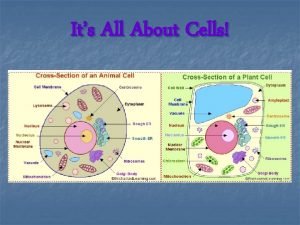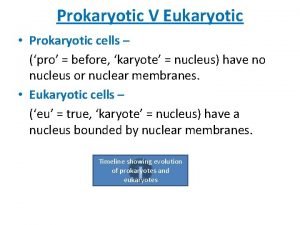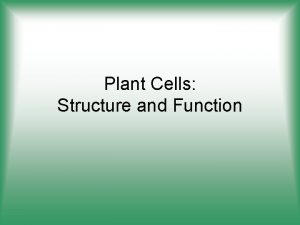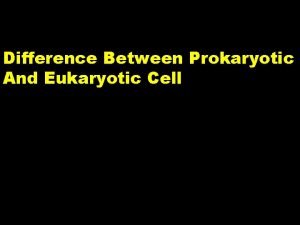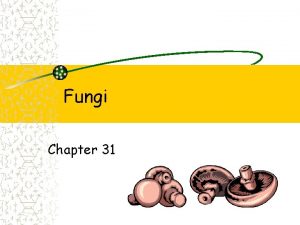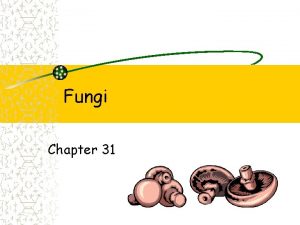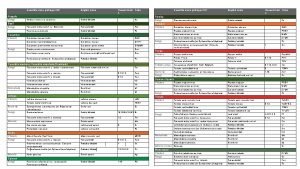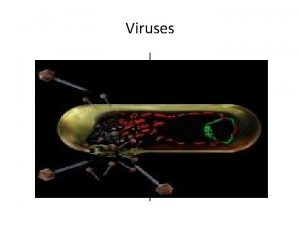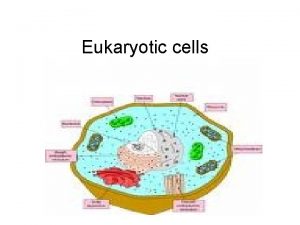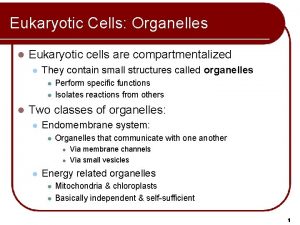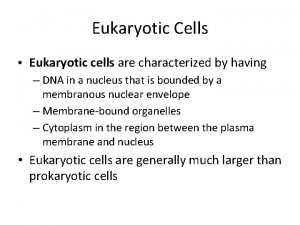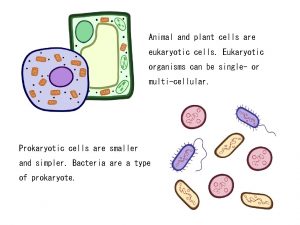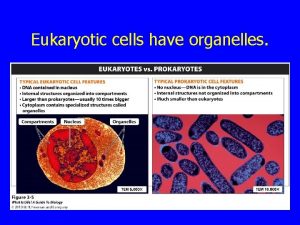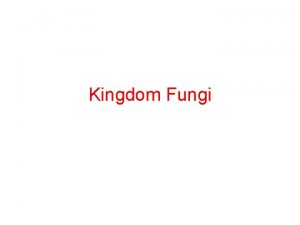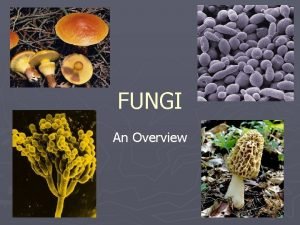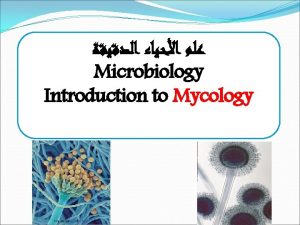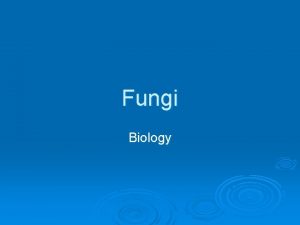Structure of cells Proand eukaryotic cells viruses fungi
























- Slides: 24

Structure of cells: Pro-and eukaryotic cells, viruses, fungi Maria Nemeth

Viruses • non-cellular • living and non-living characteristics • obligate intracellular parasites: they can multiply in their host cells only • size: between 20 and 30 nanometers • infect: bacteria, plants and animals

Structure of viruses • outer capsid and genetic material (DNA or RNA) • capsomeres: protein subunits of capsid • helical viruses polyhedral viruses binal viruses

Classification • Structure • Genetic material: DNA virus (Hepatitis B virus, Human papilloma virus), RNA virus (HIV) • Type of host cells: bacteriophage, plant virus (grapevine fan leaf virus), animal virus (Influenza virus, Hepatitis C virus, Human Herpes virus 8)



Vaccination • prevent viral infections of humans • stimulate the immune system to recognize the foreign agent • live-attenuated: contain weakened forms of the virus • killed viruses • viral proteins

Prokaryotic cells • lack cell nucleus and other membrane-bound organelles • bacteria and cyanobacteria • size: 1 -20 μm • no nuclear envelope • genetic material: DNA (found in the nucleoid region, small, circular, double stranded and mostly coding) • plasmid (extrachromosomal DNA, give selective advantage)


Structure of prokaryotic cells • cell membrane surrounded by a cell wall (peptidoglycan) • capsule (protection) • flagella (hair-like, moving), pili (attaching to host cells) • primitive cytoskeleton system • free and cell membrane bounded ribosomes • transcription and translation is coupled (polysome-chromosome complexes)

Morphology of bacteria • determined by cytoskeletal elements, and by the cell wall • spherical • rod-shape • vibrio • spirilla

Characteristics of bacteria reproduced by binary fission bacteriospores (highly resistant, long viability) E. g. Bacillus anthracis causing antrax Endotoxin (causing systemic inflammatory response in the body) • e. g. Neisseria meningitides causing meningitis • •


Gram staining • Gram positive bacteria (thick peptidoglycan cell wall) • e. g. Streptococcus causing Pneumonia • Gram negative bacteria (thin cell wall, cannot be stained) • e. g. Escherichia coli causing urinary tract infections

Examples • Pathogenic bacteria: – Bordetella pertussis causing whooping cough – Mycobacterium leprae causes leprosy (skin lesions) – Mycobacterium tuberculosis causing tuberculosis • Non-pathogenic bacteria: – Staphylococcus epidermidis is an inhabitant of human skin – Helicobacter pylori (found in the stomach) causing gastritis and peptic ulcer disease – Lactobacillus (low p. H establishment of the vagina)


Eukaryotic cells • nuclear envelope and other membranebounded organelles (smooth endoplasmic reticulum, rough endoplasmic reticulum, mitochondrion, chloroplast, and lysosome) • huge, linear, double stranded, mostly noncoding (98 -99%) DNA • transcription and translation is not coupled • developed cytoskeletal structure (microtubules, microfilaments, intermediate filaments) • flagella, cilia (movement, feeding, sensation)

Animal cells


Plant cells • • Chloroplast (photosynthesis) Tonoplast Cell wall Plasmodesmata

Fungal cells • cell wall containing chitin • sac fungi (ascomycetes) – E. g. yeast (saccharomyces): in bread and beer production – Brush fungi: production of certain antibiotics • club fungi (basidiomycetes) – Amanita phalloides: amanitine (inhibit the activity of RNA polymerase) and phalloidine (disrupts the function of microfilaments)


Endosymbiotic theory • Loss of cell wall • Membrane invaginations totally deteached • digestive enzymes form primary lysosomes • Nucleus and endomembrane system formation • Cytoskeletal elements appeared • engulfing primitive aerobe prokaryotes (peroxysomes, mitochondrion) • engulfing autotroph cyanobacteria (chloroplasts)

Endosymbiotic theory
 Https://m..com/watch?v=nqecciuc7jy
Https://m..com/watch?v=nqecciuc7jy /watch?v=chjprfgzh0k
/watch?v=chjprfgzh0k Prokaryotic vs eukaryotic cells
Prokaryotic vs eukaryotic cells Prokaryotic cells
Prokaryotic cells 4 types of eukaryotic cells
4 types of eukaryotic cells Is a red blood cell prokaryotic or eukaryotic
Is a red blood cell prokaryotic or eukaryotic Amoebozoa definition
Amoebozoa definition Fungi
Fungi Are fungi eukaryotic
Are fungi eukaryotic Fungi cell wall
Fungi cell wall Are fungi eukaryotic
Are fungi eukaryotic Most prominent organelle in eukaryotic cells
Most prominent organelle in eukaryotic cells Eukaryotic cells
Eukaryotic cells 3 parts of cell theory
3 parts of cell theory Cytoskeletal protein
Cytoskeletal protein Similarity between prokaryotic and eukaryotic cells
Similarity between prokaryotic and eukaryotic cells Organelles in eukaryotic cells worksheet
Organelles in eukaryotic cells worksheet Fungi locomotion present or absent
Fungi locomotion present or absent Are eukaryotic cells living or nonliving
Are eukaryotic cells living or nonliving Answers
Answers Prokaryotic and eukaryotic cells chart
Prokaryotic and eukaryotic cells chart Prokaryotic and eukaryotic difference
Prokaryotic and eukaryotic difference Eukaryotic cell structure plant
Eukaryotic cell structure plant Similarities between prokaryotic and eukaryotic cells
Similarities between prokaryotic and eukaryotic cells Differences between prokaryotic and eukaryotic cells
Differences between prokaryotic and eukaryotic cells






